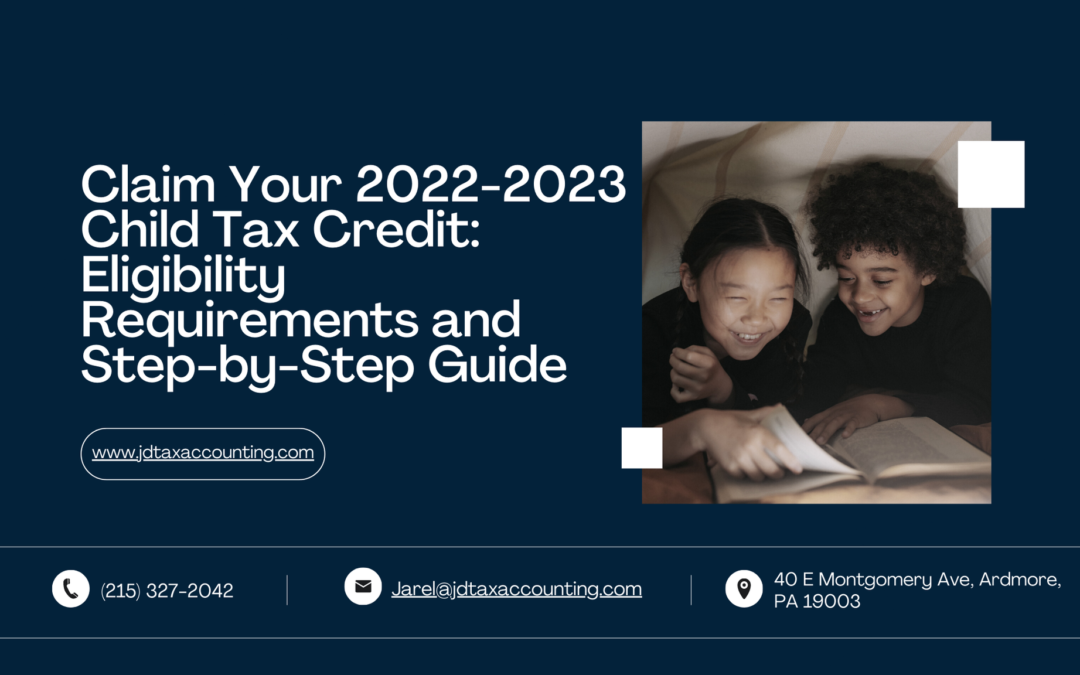The Child Tax Credit 2023 has already been a lifeline for millions of American families, and with the new changes set to take effect, it will provide even more relief to those who need it the most. These changes include an increase in the credit amount and expansion of eligibility criteria, providing support to low and middle-income families. As a result, the Child Tax Credit 2023 will continue to play a critical role in reducing child poverty rates and helping families meet their basic needs.
Under the previous law, the Child Tax Credit provided up to $2,000 per child under 17. However, with the new legislation passed by Congress and signed into law by the President, the Child Tax Credit will be expanded and extended for 2023.
Firstly, the maximum credit per child will be increased to $3,000 for children aged 6 to 17 and $3,600 for children under 6. This represents a significant increase in the financial support families can receive from the government.
In addition, the Child Tax Credit will now be fully refundable, meaning that families will receive the full credit even if they do not owe any federal income tax. This change will be particularly beneficial to low-income families who may have yet to be able to claim the full credit.
Furthermore, the new legislation removes the income cap on eligibility for the credit, meaning that all families with qualifying children can claim the full credit regardless of their income level. This is a significant change, as previously, the distinction was phased out for families earning over a certain threshold, meaning that some families missed the total credit.
The changes to the Child Tax Credit are expected to provide significant relief to millions of American families struggling to make ends meet. The increased financial support will help families cover the costs of childcare, education, and other essential expenses.
According to the Center on Budget and Policy Priorities, the new Child Tax Credit is expected to lift millions of children out of poverty, including those in deep poverty. This is a significant step towards reducing child poverty in the United States and providing a better future for our children.
However, there are concerns that the new Child Tax Credit may only be temporary. The legislation only provides funding for the expanded credit for one year, and there is no guarantee that it will be extended beyond 2023. This means that families relying on credit may once again struggle if the distinction is not developed.
Additionally, there are concerns about the distribution of the credit. The new legislation requires the IRS to send out advance payments of the credit on a monthly basis, starting in July 2023. While this will provide families with much-needed support, there are concerns that some families may need to receive the total amount they are entitled to or that the payments may be delayed.
There are also concerns that the new Child Tax Credit may only reach some families who need it the most. While removing the income cap is a positive change, many families may need to be made aware of the credit or face barriers to claiming it, such as language barriers or lack of access to technology.
To ensure that the new Child Tax Credit reaches all families who need it the most, it is crucial that outreach efforts are made to inform families about the credit and to provide assistance with claiming it. This may involve partnering with community organizations and schools to reach families needing access to traditional communication channels.
Expanding and extending the Child Tax Credit for 2023 is a positive step toward providing relief to millions of American families. The increased financial support will help families cover the costs of childcare, education, and other essential expenses and is expected to lift millions of children out of poverty. However, concerns about the temporary nature of the credit and the distribution challenges may arise. To ensure that the credit reaches all families who need it the most, it is essential to prioritize outreach efforts and provide assistance with claiming the credit.
Child Tax Credit: What It Is, Requirements & How to Claim

What is the Child and Dependent Care Tax Credit?
Raising a child can be expensive, and the cost of childcare can add up quickly. However, there is a tax credit available that can help ease the financial burden for eligible taxpayers. The Child and Dependent Care Tax Credit is designed to help offset the cost of childcare, allowing taxpayers to claim a credit on their tax returns. In this guide, we will take a closer look at the Child and Dependent Care Tax Credit, how it works, and what you need to know to qualify.
The Child and Dependent Care Tax Credit is a tax credit that allows eligible taxpayers to claim a credit for expenses paid for the care of a qualifying dependent. The dependent can be a child under the age of 13, a disabled spouse, or a disabled dependent of any age. The credit is intended to help offset the cost of childcare or other care services, allowing taxpayers to claim up to 35% of their qualifying expenses.
Qualifying Expenses:
To qualify for the Child and Dependent Care Tax Credit, the expenses must be related to the care of a qualifying dependent while the taxpayer or their spouse worked or looked for work. Qualifying expenses can include:
- Daycare or preschool expenses
- After-school care
- Summer day camp expenses
- Expenses paid to a nanny or babysitter
- Elder care expenses for a disabled spouse or dependent
In addition, the expenses must be necessary to allow the taxpayer or their spouse to work or look for work. Expenses incurred for personal or household services, such as cooking or cleaning, do not qualify for the credit.
Qualification Criteria:
To qualify for the credit, the taxpayer must meet several criteria. First, the dependent for whom the expenses were paid must be a qualifying dependent, as defined by the IRS. The taxpayer or their spouse must have earned income for the year, and the expenses must have been paid to a qualifying care provider. Qualifying care providers include licensed daycare centers, nannies, babysitters, and other caregivers who provide care services for compensation.
The credit is also subject to income limits, with the credit amount phasing out for taxpayers with adjusted gross incomes above certain thresholds. In addition, the maximum amount of qualifying expenses that can be used to calculate the credit is limited to $3,000 for one dependent or $6,000 for two or more dependents.
The Child and Dependent Care Tax Credit can provide significant financial relief for families struggling with childcare costs. If you are eligible for the credit, take advantage of it and claim the full amount you are entitled to. Be sure to keep accurate records of your qualifying expenses and consult with a tax professional or use tax software to ensure that you are filing your taxes correctly and taking advantage of all available credits and deductions. With proper planning and preparation, you can take advantage of this valuable tax credit and save money on your taxes.


